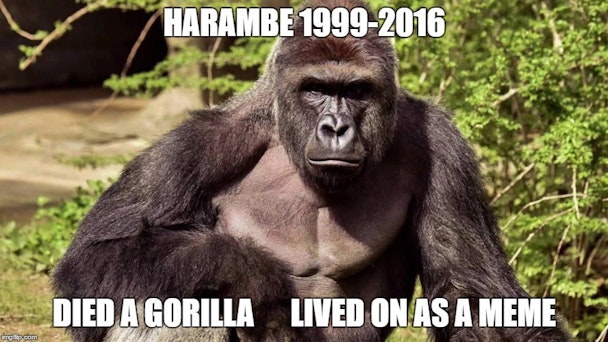Digital landfill - how brands can become part of our online culture
It’s 2016, Prince is dead and a racist billionaire is running for president. And that’s just IRL. Online, a single click offers us everything from one-hour delivery to exploding body parts, goat porn, and spoilers for the next Star Wars. Most brands can’t even get cut-through in their own category, let alone compete with memes about Harambe.

Brands are struggling to compete with the world of content out there
The internet has established itself as a place of extremes, where the discourse and content continues to push the boundaries of our collective culture. Even its native brands suffer – Reddit lost a chief executive officer to the whims of its fanbase. What hope, then, for brands forging a path in this landscape, their spend increasingly forced into the digital space by changing user habits and the rising costs of offline advertising?
The high-profile failures are easy to mock. Was there really any other outcome than trolling ne’erdo-wells teaching Microsoft’s shiny new AI project to be a Nazi? And surely a brand with the spending power and cultural nous of McDonald’s (who once commissioned the likes of Justin Timberlake and Pusha T) could have painted the town a shade other than beige? Their well-intentioned but anodyne Channel U folded after less than a year, and the team was forced to admit that “Content is really difficult”. Truth.
But we shouldn’t use these as warnings to discourage risk; risk remains our crucial weapon. Charting a safe path online is only really an option for brands with the assurance of big budgets, who can spend their way to fame. Facebook’s recent travails over video metric reporting belie the fact that the days of organic sharing wildfire are limited to elusive cultural moments - Baumgartner’s Space Jump, or Kenzo’s latest with Spike Jonze. The rest is digital landfill: unclicked, unloved, unvalued.
Many of the brands who prosper in the new era are those who have embraced an aspect of internet culture’s more wayward tendencies.
Joe.co.uk troublemakes with impunity, operating more like a member of the public than a traditional publisher; challenging how brands can behave in a space that is both ‘ours’ and ‘theirs’. Every too-far, copyright-baiting piece of content shows how it adopts the truths, behaviours and norms of its audience in a way that feels real to them, not forced. In the luxury space, Equinox and Everlane play to the internet’s inherent tribalism; the first by taking on edgy, hot-button topics in line with its hyper-alpha persona; the latter by physically restricting access to limited numbers. These are brands who can’t outspend the competition, but retain the confidence to express a point of view and inspire strong feelings at the expense of wide appeal.
At scale, the more left-field cultural moments are coming from surprising sources. Beyoncé remains fortunate enough to have a highly in-demand product, but her Lemonade launch was still enough of a phenomenon to be subject matter for the Harvard Business School. From the savvy partnerships with Tidal and Instagram, precision-curated social of her Ivy Park clothing line, uncompromising album-only access, to the taut subject matter full of internet gold: emotional transparency, political frankness, feminist blackness and sheer celeb voyeurism. Its immediate influence? Frank Ocean raising the game by using many of the same tricks, but making it work more fluidly between the online and offline spaces, and releasing independently, without the power of a label.
It’s a strange world when the team around Beyoncé has more radical thinking about content distribution than most agencies. But it shouldn’t surprise: the internet has always been a place for the risk-takers. And brands willing to step outside their comfort zone avoid apathy and neglect – the biggest risks of all.
Jamal Cassim is managing partner at Dare
